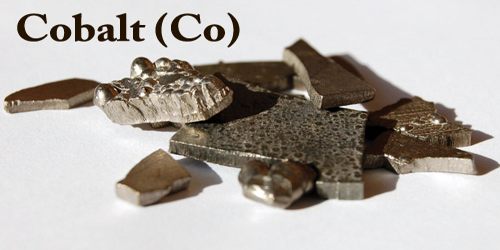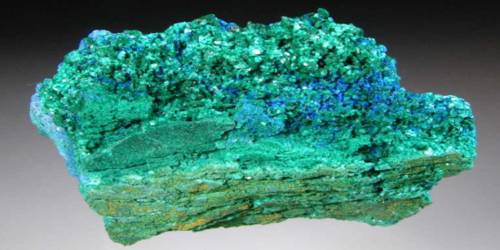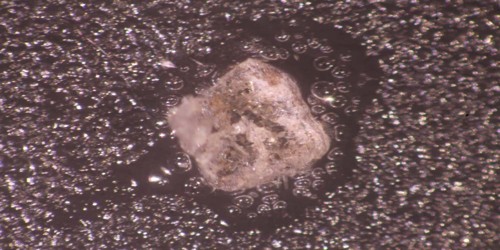Definition –
Scapolite (Gr. σκάπος, rod, and λίθος, stone) any of a group of feldspathoid minerals found in calcium-rich metamorphic rocks, particularly marble, gneiss, granulite, greenschist, and skarns. It is a name used for a group of aluminosilicate minerals that includes meionite, marialite, and silvialite. Meionite and marialite are end members of a solid solution series. The two endmembers are meionite (Ca4Al6Si6O24CO3) and marialite (Na4Al3Si9O24Cl). Silvialite (Ca,Na)4Al6Si6O24(SO4,CO3) is also a recognized member of the group.
Scapolite is a mineral series consisting of two very similar minerals: sodium-rich Marialite and calcium-rich Meionite. The two Scapolites also differ in that Meionite has a carbonate radical in place of chlorine that is present in Marialite. The two Scapolite minerals are often visibly indistinguishable from each other, and they also form unclassified intermediary examples within their series. Scapolite is the accepted term that encompasses both minerals, and further classification into Marialite or Meionite is often not done unless the species determination is absolute.
These minerals have very similar compositions, crystal structures, and physical properties. They cannot be easily distinguished from one another in the field or during hand specimen examination in a laboratory. The name “scapolite” is a term used for convenient communication. These minerals are found in small quantities in some metamorphic and igneous rocks.
Occurrence and Properties of Scapolite –
Scapolite is fairly common mineral, several localities stand out for producing excellent specimens of gemmy, transparent examples of this mineral. The stone was first discovered in the year 1913 in the country of Myanmar. Beautiful purple crystals come from Afghanistan at Badakhshan Province; and at Dara-i-Pech, Konar Province. Light purple Scapolite comes from Muzeinaya, Kukh-i-Lal, Tajikistan; and pale yellow crystals from Karur, Tamil Nadu, India.

Principal occurrences are Quebec and Ontario, Canada; Kiruna, Swed.; Pennsylvania, United States; and Queensland, Australia. Colorless and yellow Scapolite is found in the marble region of Mogok, Burma (Myanmar), and transparent yellows crystals come from Tanzania in the Merelani Hills, Arusha; and in Morogoro, Uruguru. Transparent, light yellow crystals come from Antananarivo and Tuléar Provinces, Madagascar; and colorless, elongated crystals from Linópolis, Doce valley, Minas Gerais, Brazil.
In the U.S., fairly large white Scapolite crystals have come from Franklin, Sussex Co., New Jersey; Amity and Twin Lakes in Woodbury, Orange Co., New York; and Pierrepont and Rossie, St. Lawrence Co., New York. In Canada, excellent crystals come from the Bancroft area, Ontario; and from Diamond Lake, Herschel Township, Ontario. Good Scapolite was found in Gooderham, Haliburton Co., Ontario; and a strongly fluorescent Scapolite with a bright yellow fluorescence, comes from Grenville-sur-la-Rouge, Québec, associated with blue-fluorescing Diopside.
Scapolite has an appearance that is very similar to many feldspars. As a result, it can easily be overlooked in the field and during hand specimen examination in a laboratory. Massive scapolite is found in regionally metamorphosed rocks such as marble, gneiss, and schist. These massive specimens often exhibit a wood-grain or fibrous texture which facilitates their identification. Well-formed, gem-quality, prismatic crystals with a square cross-section are sometimes found in marbles.
Scapolite crystals are often short and stout with a slightly angled or pyramidal termination, or long and prismatic. Crystals can be very large and fat, and are often intergrown in groups of such crystals or are columnar. Also grainy, massive, and crudely as formed crystal masses. Prismatic crystals are often striated. Crystals are usually white or greyish-white and opaque, though meionite is found as colorless glassy crystals in the ejected limestone blocks of Monte Somma, Vesuvius. The hardness is 5-6, and the specific gravity varies with the chemical composition between 2.7 (meionite) and 2.5 (marialite).
Marialite, a sodium aluminosilicate, and meionite, a calcium aluminosilicate, are the theoretical end-members (pure compounds); they have been synthesized but occur in nature only with at least 20 percent substitution of one for the other. Wernerite (the former group name) has been used for members of intermediate composition between marialite and meionite.
Scapolite minerals are easily attacked by weathering. They are some of the first minerals attacked in their host rocks and easily alter to micas and clay minerals. As weathering begins, the mineral grains lose their transparency, become opaque, and have a reduced hardness.
Moreover, the scapolite is also known as the Wernerite named after the one who discovered it. Some other pseudonyms of the stone include Mizzonite. Dipyre, Marialite, and Meionite. The term scapolite originally came from the Greek term skapos that means stem or stick. This is mainly because of the long columnar formation of the stone, which looks like a stem or stick.
Uses and Benefits of Scapolite –
The gemmy clear crystals of Scapolite are important collector minerals, especially when they exhibit a good size and color. These transparent forms are also cut as rare collectors gemstones. Yellow and pink transparent scapolite can be cut into very attractive gems like the yellow scapolite shown on this page. Some specimens contain tiny fibrous inclusions that produce a “silk” within the stone that reflects light to form a cat’s-eye. A specimen with a coarse silk that forms both a cat’s-eye and a diffraction grating is shown in the photo at the top of this page.
Scapolite has a Mohs hardness of between 5 and 6, which is too soft to serve as a ring stone. Its use is therefore limited to being a collector’s stone and being mounted in jewelry such as earrings and pendants that have a low risk of impact or abrasion.
Scapolite assists post-operative recovery and stimulates cellular memory and calcium assimilation. It is said to unblock varicose veins, cataracts and glaucoma, assist with bone disorders and the shoulders, calm restless eyes and overcome incontinence. It can be used to counter all manner of stress related illnesses and imbalances. It is especially useful for ulcers and digestive upsets caused by stress. This stone is useful for stabilising your mental state and helping to regulate brain biochemistry.
Furthermore, this stone may also help people in rising above their challenges and not getting deterred by them. It’ll also strengthen our own understanding of our self so we may not misuse our personal power. This stone may bring about various changes in our environment and life. It may work with us as well in getting us where we should be, in order to attain our goals. It has positive feeding energy, which may not leave our feeling exhausted or drained.
Scapolite removes the emotional garbage that prevents us from moving forward. Opens emotional images and flashbacks for clearing and resolving; effects permanent release of old karmic patterns, it will end suffering at the source, but not always gently. It promotes change in every aspect of our life, promotes moving forward on our path and in our life once old issues are removed.
Scapolite is a stone of self-discipline stimulating independence and achievable goals based on objective mental planning rather than wish-fulfillment, scapolite overcomes inertia and self-sabotage, induces transformation and provides the clarity to see what is needed.
Information Sources:
















